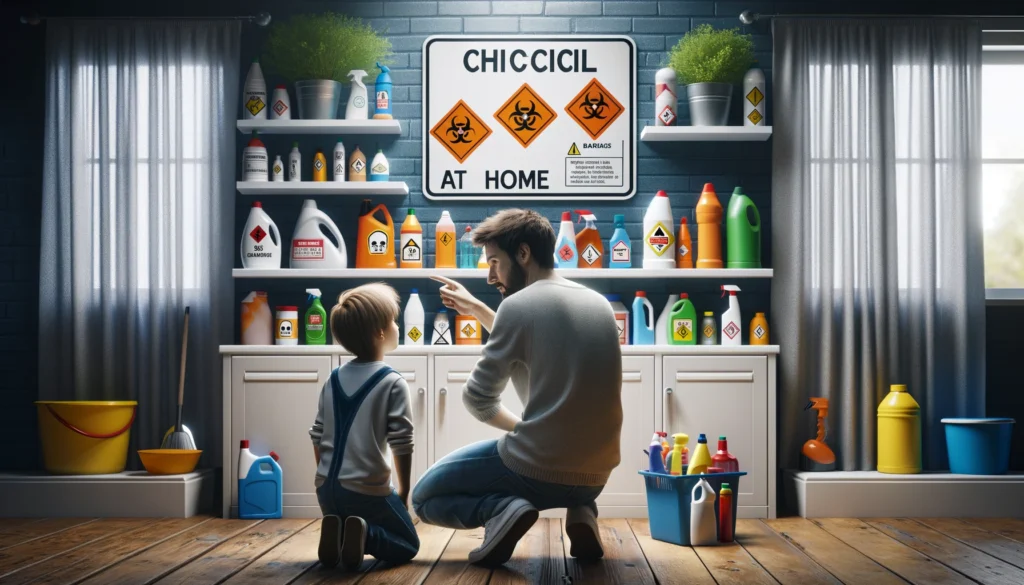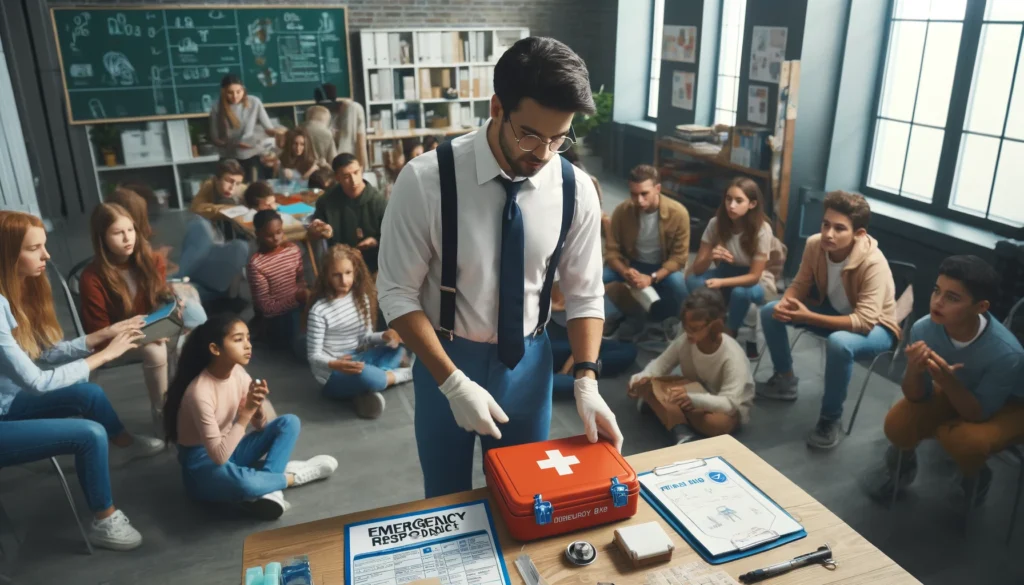Introduction
In a world brimming with complexities, the well-being of the younger generation hinges on their understanding of the myriad hazards they may encounter. Equipping children and teens with the knowledge to identify and respond to risks is not just a necessity; it’s a foundational aspect of nurturing a resilient and safety-conscious future. This blog seeks to illuminate the various hazards present in everyday life and to provide strategies for educating the young about staying safe, responsible, and informed.

Identifying Common Hazards
The home, school, and even the great outdoors, while nurturing grounds, are rife with potential hazards. From the innocuous-looking cleaning agents tucked away under the sink to the seemingly harmless batteries in their toys, risks abound. Recognizing these dangers – electrical outlets, sharp objects, and even slippery floors – is the first step toward prevention. Teaching children to be mindful and cautious in their environment can drastically reduce the incidence of domestic accidents.
The Internet and Cyber Safety
As digital natives, today’s youth navigate an online landscape that older generations could scarcely imagine. This digital expanse, though rich in resources and connectivity, is fraught with risks such as cyberbullying, identity theft, and exposure to inappropriate content. It’s imperative to instill in children the principles of cyber safety: protecting personal information, recognizing suspicious online behavior, and understanding the permanence of digital footprints. Educating them about the safe use of social media, the importance of privacy settings, and the need to communicate any online discomfort to a trusted adult is crucial in safeguarding their digital well-being.

Chemical Safety at Home
Household chemicals, while useful, can be a Pandora’s box of hazards if not managed correctly. Educating the young about the potential risks of these substances is key. Teach them to read labels, understand the significance of hazard symbols, and to never mix chemicals. Safe storage – keeping chemicals out of reach and in their original containers – and knowing what to do in case of exposure are lessons that could be life-saving. This is where the mantra ‘better safe than sorry’ takes on its full meaning.

Physical Safety: From Playgrounds to Sports
Physical activity is vital for the young, but with it comes the risk of injury. Playgrounds should be zones of joy, not jeopardy. Educating children about using equipment safely, wearing appropriate gear, and understanding their own limits can prevent many a scrape and bruise. The same applies to sports; understanding the rules, mastering the right techniques, and wearing the correct protective equipment are non-negotiable for safe play. Schools and parents can collaborate in reinforcing these practices through regular discussions, drills, and safety workshops.
Nutritional Hazards and Food Safety
In an age of food allergies and dietary complications, nutritional education is paramount. Understanding food labels, recognizing allergen warnings, and being aware of personal dietary restrictions are crucial knowledge points for children. Furthermore, basic food safety practices such as washing hands, keeping raw and cooked foods separate, and the correct handling of food can help prevent foodborne illnesses. Embedding these practices early on can pave the way for a lifetime of healthy eating habits.
Emergency Response Education
Emergencies demand prompt and efficient action, and even the youngest members of our society can learn basic response skills. Familiarizing them with emergency numbers, teaching them the basics of first aid, and role-playing different scenarios can equip them with confidence and critical skills. These lessons, when combined with the cultivation of a calm and collected mindset, can transform a potentially chaotic situation into a manageable one.

Environmental Awareness and Personal Responsibility
Beyond the home and the digital realm, environmental hazards loom large. Pollution, climate change, and other ecological threats require a conscientious approach. Instilling a sense of personal responsibility and respect for the environment can inspire the younger generation to be proactive in their communities. Understanding the impact of littering, conserving water, and recycling are practical habits that contribute to a safer and cleaner planet.
Incorporating Hazard Education into Everyday Learning
Making hazard education a seamless aspect of everyday life can be achieved through interactive and engaging methods. Storytelling, educational games, and school safety programs are just a few of the ways to weave safety lessons into the fabric of daily learning. The goal is to create a constant yet subtle reinforcement of safety awareness that resonates with children and becomes second nature to them.
Conclusion
Arming the younger generation with the knowledge to navigate a world filled with hazards is a shared responsibility. By fostering awareness, promoting dialogue, and leading by example, we can empower them to make informed decisions and take prudent actions. The tips outlined here serve as a guide for initiating this vital education, encouraging each child to be an advocate for their own safety and the safety of others. Remember, the conversation about safety is ongoing, and through it, we shape a future where the young can thrive, unencumbered by preventable harms.





